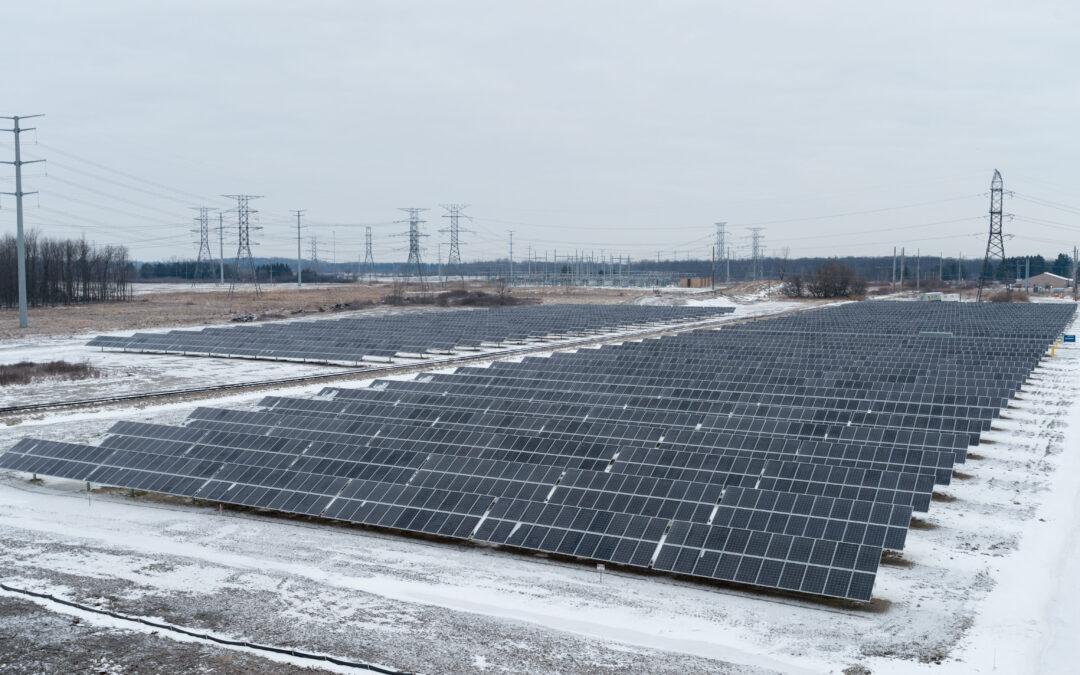Since snow is a common part of life in Michigan, you might wonder whether our solar parks throughout the state keep producing energy, even if it’s snowing and cold. The answer is: Absolutely!
While a solar array in Michigan might not get as much sun year-round as an array in Nevada, both are getting sunlight, regardless of local weather. The sun still provides light 365 days a year, and solar panels rely on sunlight, not the sun’s heat, to produce energy.
Of course, heavy snow and ice can somewhat reduce the energy generation at a Michigan solar park. But the Department of Energy (DOE) has done extensive testing in many snowy climates, determining that “solar photovoltaic (PV) panels actually produce useful power throughout all four seasons.” Another five-year winter study by the Northern Alberta Institute of Technology found that “snowfall on photovoltaic solar panels results in about a 3% energy loss.”
How is this possible? Because:
- Rooftop and ground panels are installed to be at an angle to the sun, usually at 45 degrees. Additionally, newer technology allows some panels to rotate throughout the day, following the sun. Those angles allow for the snow to quickly slide off the panels.
- The dark tint of solar panels helps each panel to soak in as much light as possible, warming the panels enough to melt accumulating snow and ice that hasn’t already slid off.
- It is rare that an entire array is 100% covered with ice or snow all at once, so even in heavy storms, partial exposure of a panel to the sun allows that panel to create some electricity.
What might surprise some is that solar panels have been shown to “operate more efficiently in cooler temperatures than in high heat,” according to Anker, a battery and solar panel manufacturer, on their blog. “This is because lower temperatures reduce the electrical resistance within the photovoltaic cells, allowing them to produce electricity more effectively.”
Anker’s blog adds that the snow around ground-mounted panels helps reflect the sunlight in the winter as well. “The reflective quality of snow-covered ground can increase the amount of sunlight hitting the panels, acting like a mirror to boost energy production. This phenomenon, known as the albedo effect, can offset some of the lost production [due to snow cover].”
Marcus Adams, a supervisor for Renewable Energy Operations at DTE, agrees. “There are many variables that affect the performance of solar modules. Ambient temperature is just one variable. Cold temperatures do improve the production of solar, and the size of our developments helps us broaden production during the seasons where the sun isn’t as prevalent.”
One advantage that Michigan solar arrays have over Nevada: cleanliness! When the snow does melt off solar panels in winter, it takes debris with it, keeping them clean and making our panels work more efficiently.
If you’d like to learn more about how our solar parks operate, check out this video.
